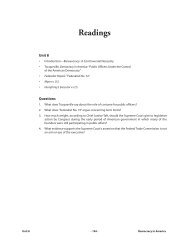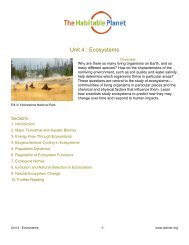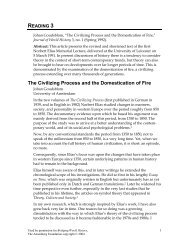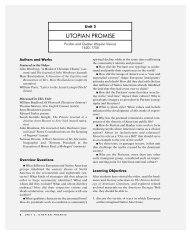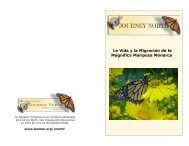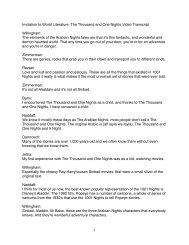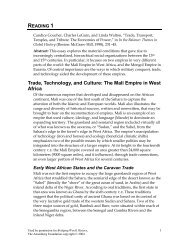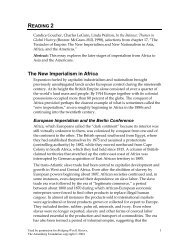Create successful ePaper yourself
Turn your PDF publications into a flip-book with our unique Google optimized e-Paper software.
of Kashmir’s rich textile traditions after 1947, and both governments<br />
promoted the export of Kashmiri shawls after Independence (Riazuddin<br />
1988; Chattopadhyay 1995; Bamzai 1987).<br />
3. All the books in the bibliography mention one or more of these uses but<br />
see especially Ahad 1987, Alder 1985, Goswamy 1993, Irwin 1955, Kalter<br />
1983, Scarce 1988/89, and Veinstein 1999. For illustrations, see Ames 1997<br />
and Kumar 1999.<br />
4. The Vermont Country Store mail order catalog still sells “Cashmere<br />
Bouquet,” and claims that the talcum powder was first sold in the 1870s.<br />
Over time, repeated European and Euro-American usage disassociated<br />
the word “cashmere” from its geographical origin and may have<br />
weakened its link to the “exotic.” China and Mongolia have become<br />
geographical references for cashmere sweaters in thirty-eight U.S. mail<br />
order catalogs such as Lands’ End.<br />
5. For the historical irony concerning contemporary Western rhetoric<br />
concerning product copyrights, see the review of the 1998-1999 Paris<br />
exhibition “Cachemires parisiens a l’ecole de l’Asie, 1810-1880” in FMR<br />
95, December 1998/January 1999, 13.<br />
6. The plain-weave pashmina shawls currently in the marketplace are quite<br />
distinct from the intricately woven Kashmiri shawls sold in the late<br />
eighteenth century, but the raw material for both types of shawls is the<br />
same. William Safire’s “On Language” in the January 16, 2000, New York<br />
Times discussed the “advertising trick” of renaming cashmere to make it<br />
sound more exclusive under the title “Pulling soft wool over your eyes”<br />
(Magazine, 41). According to the December 6, 1999 issue of Newsweek,<br />
pashmina shawls are not made from hair specially “culled from the necks<br />
and bellies of Himalayan goats.” A U.S. scientific study compared<br />
“cashmere” fibers to “pashmina” fibers and they looked “exactly” alike<br />
under the microscope. Furthermore, the blending of silk with cashmere<br />
makes the current shawls “lighter” in weight, but should also make them<br />
cheaper as they have less cashmere (76–77).<br />
7. For “fashion cycles,” see Fred Davis 1992, 80; for the link between<br />
Chinese commodities and Chinoiserie, see Porter 1999; for Japonisme,<br />
Hosley 1990; for Orientalism, Benjamin 1997, Edwards 2000, Stevens 1984,<br />
and Sweetman 1988; for “Indian style,” Gere 1971 and Head 1986. Tracing<br />
the parallels among these fashion cycles will be a separate project.<br />
8. Coldwater Creek catalog, Spirit of the West, January 1999, 67.<br />
9. Ladakh is a remote district of Jammu and Kashmir state in India, and is<br />
politically separate from Tibet. Its capital is at Leh and it lies to the east of<br />
the valley of Kashmir. Trade caravans that passed through Ladakh<br />
Used by permission for Bridging World History, 26<br />
The Annenberg Foundation copyright © 2004



